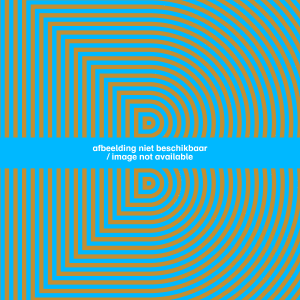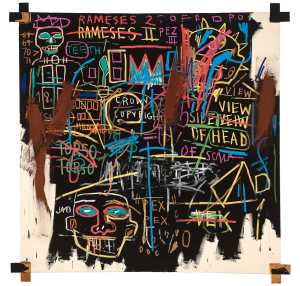The British collector Edward James not only had many paintings and drawings by his hero Dalí, but he also asked him to design objects for use in his home. One of them was this famous telephone with a lobster receiver - a creepy fantasy that did not exactly make taking a call or ringing someone up a more enjoyable experience.

Specifications
| Title | White Aphrodisiac Telephone |
|---|---|
| Material and technique | Telephone, plaster, paint and cord |
| Object type |
Telephone
> Forms of information and communication
> Utensil
|
| Location | This object is in storage |
| Dimensions |
Width 15 cm Height 20 cm Length 32 cm |
|---|---|
| Artists |
Artist:
Salvador Dalí
|
| Accession number | BEK 1676 (MK) |
| Credits | Purchased 1995 |
| Department | Modern Art |
| Acquisition date | 1995 |
| Creation date | in 1936 |
| Collector | Collector / Edward James |
| Entitled parties | © Salvador Dalí, Fundación Gala-Salvador Dalí, c/o Pictoright Amsterdam 2022 |
| Provenance | Edward James, Chichester 1936-64; Edward James Foundation, Chichester 1964-95; The Mayor Gallery, London 1995 |
| Exhibitions | Paris 1938*; Paris 1979-78*; London 1980*; Munich 2000; Rotterdam 2005a; London/Rotterdam/Bilbao 2007-08; Rotterdam 2017a |
| Internal exhibitions |
The Collection Enriched (2011) Een paraplu, een naaimachine en een ontleedtafel. Surrealisme à la Dalí in Rotterdam. (2013) Gek van surrealisme (2017) De collectie als tijdmachine (2017) |
| Research |
Show research A dream collection - Surrealism in Museum Boijmans Van Beuningen |
| Literature | Breton 1938, p. 27*; Dalí 1942, p. 271*; Rotterdam 1972, cat. no. 7; Brighton 1998, pp. 27, 98; R. Descharnes/N. Descharnes 2003*, pp. 42-43; Rotterdam 2007, pp. 103-05; London/Rotterdam/Bilbao 2007-08, pp. 284-85; Paris/Madrid 2012-13*, pp. 180-81; Edinburgh 2016, p. 217 |
| Material | |
| Object | |
| Geographical origin | Spain > Southern Europe > Europe |
Do you have corrections or additional information about this work? Please, send us a message
Entry catalogue A dream collection - Surrealism in Museum Boijmans Van Beuningen
Author: Marijke Peyser
Commissioned by his patron Edward James, and with his assistance, Salvador Dalí designed a number of Surrealist telephones with a plaster lobster in place of the receiver.[1] These objects are made of different parts put together that have nothing to do with each other: a telephone and a crustacean. This was how the Surrealists created new, surprising realities. James maintained that the idea for making this object came from seeing a rather spoilt woman having breakfast in bed. Just as the lobster was being served the telephone rang. By mistake she picked up the lobster.[2] Like many anecdotes this one also seems to be too good to be true.
Dalí’s lobster telephones were a new, playful approach. In his autobiography he wrote, ‘I don’t understand why they never bring me a well-cooked telephone when I order a grilled lobster, why they don’t chill telephone receivers, which are always so warm and sticky, along with the champagne, for they would always be better in a bucket of crushed ice.’[3] Another extract from Dalí’s autobiography – the part describing the years when he had no money and got to know ‘Le tout Paris’ (c. 1929-33) – has a more convincing biographical significance. Gala helped the intensely shy Dalí, as he described himself, to acquire a persona: ‘Life could have made me as hard as stone, but Gala made me the shell of a hermit crab, so good that in my contacts with the outside world I passed for a fortress, while inside I remained soft, super-soft’.[4]
The lobster also took off commercially. In the spring of 1937 Dalí designed fabrics with a lobster motif for the fashion designer Elsa Schiaparelli.[5] When the fabric was transformed into elegant evening wear – the enormous lobster was ‘front and centre’ – Dalí recommended wearing the gown with a good dollop of mayonnaise. In 1939, as part of the New York World’s Fair, he designed the Dream of Venus pavilion in which almost naked living ‘sculptures’ were on display alongside lobster sculptures and paintings. He described it as follows: ‘for the sum of 25 cents the public gets to see a ten-minute show. Monsieur Dalí refuses to provide further details, except to say that it will be one of the most talked-about events of the age: a three-dimensional spectacle performed by living beings dressed in costumes designed by Dalí himself ’.[6]
All about the artist
Salvador Dalí
Figueras 1904 - Figueras 1989
Salvador Dali got to know the author André Breton - the founder of the surrealist movement - while he was studying in Madrid. In 1924, Breton wrote the first...
Bekijk het volledige profiel






















